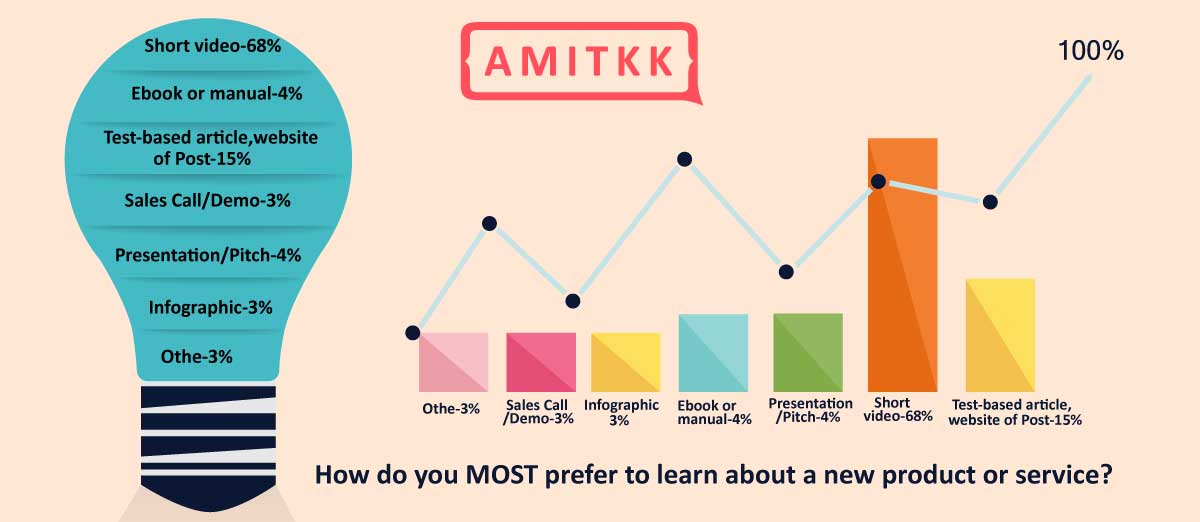In the initial days of modernization, pacesetters rapidly learned that they had a competitive edge when accelerating digital transformation. It is straightforward to integrate digital tools, and they are easy to utilize. Moreover, they are cost-effective and reasonable.
Despite the advantages of digital instruments, many small companies need to catch up in digital transformation. Companies that hesitate to digitize can fight sustainable development while competitors lead. In today's marketplace, it's a matter of survival. The pandemic and other products in the market make digital transformation more rapid for small and medium-sized businesses (SMBs).
Read about digital transformation and why small and medium-sized companies need to speed it – and see the future at work.
How Does Digital Formation Work
Digital transformation is more than adding a few digital tools to your current workflows. It needs a new understanding of how your organization today performs and its prospects for improved operation.
Digital transformation entails utilizing digital technologies rather than traditional manual methods. The "transformation" aspect is an excellent manner of transforming your firm via suitable digital tools and processes!
Companies that incorporate digital technology in every business sector fundamentally transform how they provide value and satisfy the needs of their consumers. Initiatives of digital transformation demand a total cultural change within your company. It would help if you asked questions, tested tools, and workflows, and possibly had an occasional failure. It is an opportunity to learn how to do things more when digital tools aren't working as you expect; therefore, it is correct.

Why Digital Formation is Important for Small Business
The epidemic compelled many firms to do so, whether or not small firms were ready for digital transformation. Digitization maturity plays a significant part in small enterprises' growth. If the projections are over, small companies which digitize their enterprises will move forward on an extraordinarily rising route shortly.
Let's take a more detailed look at where the small companies stand and how the leading managers are moving to Digital Tools to understand better why they have to speed up digital transformation.
Whether you have just started or wish to refine your digital transformation strategy, you can benefit from a well-designed implementation plan.
With increasing consumer demands, SMBs have the same momentum as significant companies to transform. But between businesses and small businesses, there are specific differences:
Budget and Time:
Most businesses require complicated solutions to be transformed and consequently need higher budgets and generally have more time to do it. But for small enterprises, the converse is true: they have fewer budgets and a shorter transformation time. As a result, it is essential to simplify digital transformation to focus on the main areas in which digital technology can be incorporated (versus all business areas) and to have personalized playbooks.
People and Culture:
Companies can choose executives responsible for digital transformation to promote Culture and inject energy into the organization. • People and Culture: Many SMEs lack the management support they need to transform.
Support to Consultants:
Companies can offer them a roadmap for transformation, and consultancies can finance and employ them. Smaller companies may have different budgets or luxuries.
Some small companies prefer to stand still in the face of these problems. Digital transformation is a prerequisite for modern consumer assistance for all small enterprises, as 84% of clients prioritize experience and actual items and services.
The key to driving the successful transformation of small companies can be a streamlined digital transformation strategy that prioritizes value-added — and partnership with a suitable vendor to aid in achieving that approach.
Leveraging vendors can be a crucial strategic choice for transforming small firms. As a small company, search for suppliers who know that digital transformation and customer focus eventually lead to the same result.
Digital Transformation Preparation:
A key feature is that you approach your customer with a very excellent approach; only then can you develop your products, be more at the front end of the market, and satisfy consumer requirements. Another critical element is that your company's processes should be thoroughly defined and standardized to make your company's performance more productive. The relationship between data and procedures must be good so that everything functions well, without regression, and is in order.

Digital Transformation Stages:-
- Phase 1: You must first consider the cost savings and investment needed to perform all digitalization and strive to maximize your efforts within the organization to complete a digital transformation process.
- Phase 2: Prioritize a list of procedures or areas where You can implement this transformation. Go from the top ROI to the bottom. Assess 2 or 3 possible solutions that You can integrate into your company. Hint: Artificial intelligence is a powerful instrument that affects many businesses.
- Phase 3: Build a network and a trustworthy business ecosystem to offer comprehensive solutions for market and scale success.
Digital Transformation Pros and Cons:
Pros:
One of the most favorable features of digital transformation is that it enhances your organization's competitiveness, making it equally important to all your competitors.
Digital transformation enables flexibility in the firm, improves employees' performance, and accelerates investment returns.
Improve your employees' performance by reducing their burden. This technology allows employees to spend more time with them and to socialize with their surroundings. It gives them a better feeling and boosts their business performance, speeding up their growth at whatever stage of a chain, the digital revolution, whether automated production lines or CRM software, are designed to simplify administrative activities.
Digital transformation enables you to provide your customers with a better experience, making them more engaging and returning customers. You should always invest in making your clients happy so that you may improve your business over time.
Cons:
One of the bad parts of digital transformation is the extremely rapid development of this process, so you must keep your technologies up to date and be informed of any abrupt changes every day. Only in this way can you stay in the world competition.
The fact that you are adopting these technologies in your organization. Sometimes these changes are ineffective because consumers and staff need to be used to them in the firm, so you must be extremely careful when starting such a transformation process. Similarly, such changes create concern among your employees since many positions are in the digital industry.
The Future of Digital Transformation:
In today's business world and everybody's life, digital transformation technologies play a significant role. Over time, firms have made their bets on these technologies simply because they reduce their workload and improve their productivity.
Application development will be speedier because, nowadays, businesses require faster returns for their products to the market. Fast delivery with minimum hand code, quick setup, and deployment is allowed by low-code apps.
Facial identification, categorizing text and hypertext, image classification, and handwriting recognition are other steps forward in the digital transformation expected. The focus is on obtaining data from any process and classifying it according to how you need it. This part supports vector machines.
A further future outlook is substantial growth in the volume of data, provided that all technologies embrace digital transformation because the amount of data to be stored doubles every six months, and the large variety of data makes integration difficult.
The application of technologies such as 5G, machine learning, automation and control, IT, big data, Blockchain, natural language processing, AR and VR, AI, and others will rise substantially.
You also have to invest in digital transformation to enhance your productivity progressively when you wish to change within your organization to remain competitive in the global market. More and more businesses realize the importance and benefits of digital transformation, so take your time and sign up for this worldwide digital evolution stream.
Conclusion:
It could be intimidating to start a digital transformation program. You, too, can build on the potential of technology with careful planning, priority setting, partnering, and staff education.



















 Digital Marketing Company In Delhi
Digital Marketing Company In Delhi  Seo Company In Delhi
Seo Company In Delhi  Social Media Marketing Agency
Social Media Marketing Agency  App Development In Delhi
App Development In Delhi  Offline Marketing Services
Offline Marketing Services  Content Writing Services
Content Writing Services  Influencer Marketing
Influencer Marketing  Flutter App Development Company
Flutter App Development Company  Node Js Developer
Node Js Developer  Ios App Development
Ios App Development  Branding Company
Branding Company  Ecommerce Seo
Ecommerce Seo  Free Website Analysis
Free Website Analysis 




